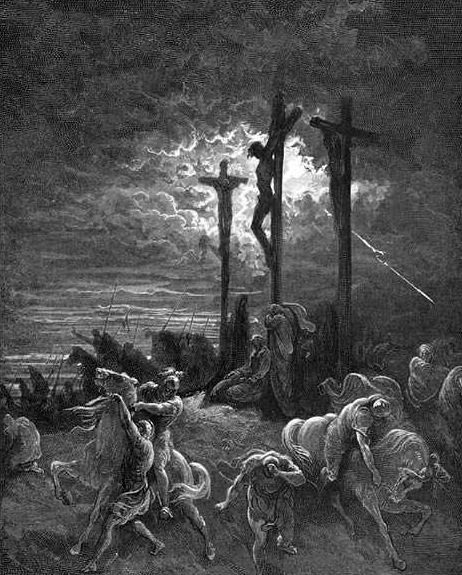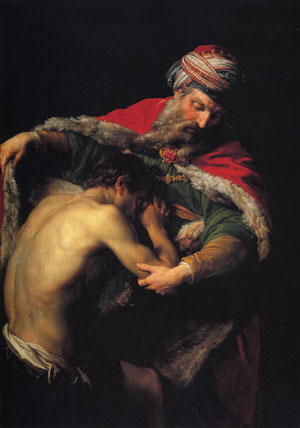Let’s look how the angel Gabriel, promised the Birth of John the Baptist to Zechariah (Luke 1:4–25)
Luke started at “the beginning” (Luke 1:3). But for Jesus’ life, the beginning was not his birth, but instead the announcement of the birth of John the Baptist—the person who would prepare the way for Jesus. Zechariah’s wife, Elizabeth, was also from the priestly line of Aaron. Elizabeth descended directly from Aaron, brother of Moses and Israel’s first high priest (Exodus 28:1).
Zechariah and Elizabeth both were righteous in God’s eyes. This does not mean that they were sinless, but that they loved God and obeyed him. Luke adds the detail that they were both quite old. (Luke 1:6–7) .1 This gives each of us, as it does myself, encouragement: God can reveal a ministry to begin at any juncture in our lives. As long as we draw breath, we can serve the Lord.
I am focusing on the angel Gabriel (Luke 1:19) who delivered the unique message of the Good News about Jesus to Zechariah who is now forever known in the Gospels as the father of John the Baptist. His theophany 2 was not a dream or a vision; the angel was a royal herald of God who had brought divine insights to another nobleman of God during the exile to Babylon – Daniel. The angel appeared in visible form and spoke audible words to the Zechariah, the priest as he had done to Daniel in bygone days. (Luke 1:11)
The angel appeared as Zechariah placed the incense on the altar. At this great moment, God begins to work in a fresh way to redeem humankind by revealing his sending of the forerunner – John the Baptist – to present the One who would take sin away from the world. How appropriate to pick a moment of worship and a time when people recognised their need for cleansing from sin! 3
“Your wife, Elizabeth, will bear you a son.” (Luke 1:12–13) The angel even told Zechariah what to name the baby: John means “the LORD is gracious.” Through the birth of this son, God was gracious to Zechariah and Elizabeth, and ultimately to all people, for this son would prepare people’s hearts for the Messiah.
Luke refers to the Holy Spirit – the third person of the Trinity – more than any other Gospel writer does; it was a primary focus for him (see Luke 1:35, 41).4 That John would be filled with the Holy Spirit, even before his birth, indicates a unique choice of this child. What this signalled was the restoration of the prophetic work of the Holy Spirit that had not been present in Israel for over four hundred years (since the days of the prophet Malachi). (Luke 1:14–15)
Gabriel told Zechariah that John would go before God with the Spirit and power of Elijah – a great prophet who was known for not mincing words and for standing up to evil rulers (Luke 1:16–17 1 Kings 17–19; 2 Kings 2:9, 15; see also Matthew 11:14; 17:10–13).
John’s mission would turn the hearts of the fathers to their children. This phrase comes directly from the prophecy of the Messiah’s forerunner found in Malachi 4:5–6. Though the meaning of the phrase is not immediately apparent, it may mean that John’s messages of repentance would unify broken family relationships – help fathers in their parental responsibilities, or change the lives of disobedient children so that their fathers would approve of them. (see Luke 15:20)
As the story goes, John’s ministerial call to repentance would change the disobedient minds to accept godly wisdom by bringing many of his contemporaries back to a former or a new relationship to God.
When Gabriel appeared to Zechariah, he stated: “I am Gabriel, I stand in the very presence of God.” Gabriel had come with a critical message—Gabriel himself described it as good news. The old priest ought not to have doubted anything the angel said as Zechariah would recall that Gabriel was the angel who had appeared long ago to Daniel, immediately responding to his prayer in Babylon. (Luke 1:19; Daniel 9:21)
Though Zechariah and Elizabeth had been childless for many years, God was waiting for the right time to encourage them and take away their disgrace. Elizabeth realised that in this impossible pregnancy, God had performed a miracle. She praised God for taking away her shame of having no children (Luke 1:7, 25).
One of the keys to the narrative, as I noted above, is to recognise that a story’s characters represent certain types of people. In Zechariah and Elizabeth, we see not just historical figures but representative personalities, and we can identify with their attitudes. We can sympathise with Elizabeth’s plight of childlessness. But she also is an example of how she responds. Despite her disappointment, she faithfully serves God. Even when her situation reversed, she does not forget God but rejoices in what he has done to renew her.
From righteous Zechariah, we also learn something about walking with God. This Gospel is full of such exemplary characters.
Life Application Both Zechariah and Elizabeth are at the heart of the bridge between the past and the present. Our pain may not be the absence of a child, but many things can bring disappointment in life. Zechariah nor Elizabeth succumbed to bitterness, even though Elizabeth felt “disgrace.”
Maybe that is one reason God called them upright and blameless. But good people need to learn to rely even more on God. Sometimes the answer to their disappointment is not clear. Whether it be a severe illness, the loss of a child to premature death, a financial collapse, dealing with a child who falls away from Christ, or into calamity or a grave sin, or an unfortunate accident, the hard times are not always self-explanatory.
God never guarantees that life will be a bed of roses as the cliche goes, never comes without pain and disappointment sometime in our lives. The issue is how we handle it. Bitterness yields the fruit of anger and frustration, sapping our immediate joy from life. Conversely, by adhering to our faith, trust and dependence will cause us to find fulfilment in ways we would not even have considered otherwise.
God’s plan is a basic echo throughout the entire Gospel. Are we prepared for God and do we respond to his love through the ones he uses to lead us to him? As John pointed the way, we need to respect those who have led us in our journey – for me, it was my mother Ruth who read the old Bible stories to me as a young boy; Miss Phillips who came into Lord Elgin school and taught the good news on her felt board; the principal, Miss Couch, who had the entire school annually sing carols together in the hall; and Gordon Pfeifer, the evangelist who preached Christ crucified, and other exceptional elders such as Len Leatherdale, Pastor Mark Johnson, and more.
I’ve learned that we must sense God’s leading and act right then and there recognising our need for Him and respond to Jesus, the One who offers forgiveness to us! I have asked myself more than once: have I humbly walked before the Lord – taking the path he called me to, or have I too often opted to go my own way? If you draw breath, it is not too late to give your life to Jesus Christ as Lord of heaven and the earth, and your soul. Turn to Him, and He will turn to you.
Filled with the Spirit from birth, John testified to Jesus by kicking in his mother’s womb (Luke 1:44 when His mother Mary spoke to her cousin Elizabeth. A powerful testimony often accompanies the presence of the Holy Spirit in Luke. Those who are directed by God in the Spirit do not render testimony to God in the privacy of their own home, as the many Spirit-filled characters in the book of Acts also show. If we have the Spirit, God will be manifest in both our words and deeds.
Yet different ways for doing this exist (see Luke 7:24–35). John’s greatness is not found in his choice of lifestyle, but in the fact that in understanding his calling, he pursues it wholeheartedly and carries out God’s will faithfully.
God does not lead all people to minister in the same way. That diversity allows different types of Spirit-led ministry to impact different kinds of people. We should not make everyone minister, in the same way, similarly advocate our particular doctrines, nor with the same style. The test of ministry is not its external appearances; instead, it is found in much less obvious ways. As a servant of God, John became a preacher who encouraged others to live before God in a way that honoured the Creator. Not everyone responded to John, so we can ascertain that numbers needn’t measure ministerial or elder success. John’s mission was to be a source of stimulating others to find God – something we all can emulate.
The turning of the fathers and sons to each other and God (Luke 1: 17) shows how vital reconciliation within the family is. Colossians 3:21 states clearly how the father’s approach to his child can help form or deform a child’s self-image. Yet what is needed is not merely a reconciled relationship between father and child, but a spiritual connection among the family kindred secured by a robustly strong divine bond mutually uniting them to Christ.
In this way, all family members turn to serve the Lord, so that “the disobedient [are turned] to the wisdom of the righteous” (Luke 1: 17). God’s desire to unite us in a relationship to Himself has resounded over the ages since Moses taught Israel how to restore weakening divine relationship. (see Deuteronomy 4:30; Jeremiah 24:7; Isaiah 10:21; 31:6, 55:7; Zechariah 1:3; Malachi 3:7; James 4:8; Acts 16:31 NLT).
One need only needs to read all the wise words of the father to his son in Proverbs to sense how crucial a three-way relationship between parent, child, and God is. 5
1 Barton, B., Comfort, P., Osborne, G., Taylor, L. K., & Veerman, D. (2001). Life Application New Testament Commentary (p. 241). Wheaton, IL: Tyndale.
2 Meaning of Theophany: Manifestation of God that is tangible to the human senses. In its most restrictive sense, it is a visible appearance of God in the Old Testament period often, but not always, in human form. Some would also include in this term Christophanies (pre-incarnate appearances of Christ; and post-ascension visions of Christ, such as the bright light experienced by Paul on the Road to Damascus, and my own experience) and angelophanies (appearances of angels).
3 Bock, D. L. (1996). Luke (pp. 48–49). Grand Rapids, MI: Zondervan Publishing House.
4 Barton, B., Comfort, P., Osborne, G., Taylor, L. K., & Veerman, D. (2001). Life Application New Testament Commentary (p. 241). Wheaton, IL: Tyndale.
5 Bock, D. L. (1996). Luke (pp. 48–49). Grand Rapids, MI: Zondervan Publishing House.



